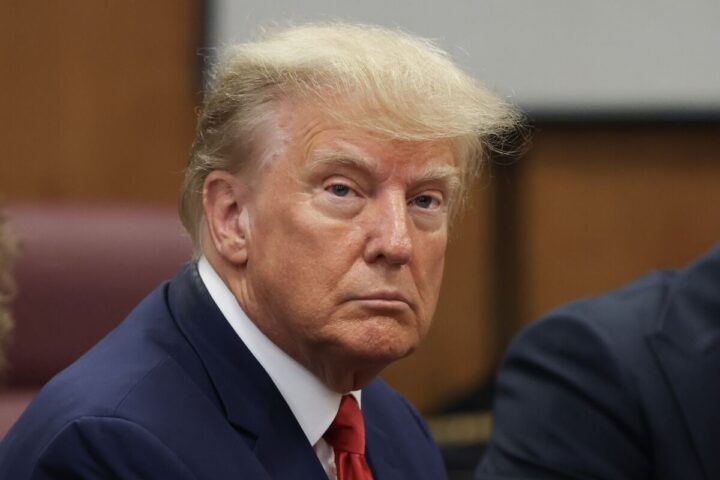Google, the tech giant, is set to update its advertising policy related to cryptocurrencies, allowing advertisements for cryptocurrency trusts targeting the United States starting from January 29, 2024.
This policy shift aligns with predictions that spot Bitcoin exchange-traded funds (ETFs) will gain approval in the United States in the same month.
In a policy change log dated December 6, Google clarified that it will permit advertisements from “advertisers offering Cryptocurrency Coin Trust targeting the United States.”
Cryptocurrency coin trusts refer to financial products that enable investors to trade shares in trusts holding significant amounts of digital currency, possibly including ETFs.
Google emphasized that all advertisers must adhere to local laws in the areas where their ads are targeted.
This updated policy will apply globally to all accounts advertising these cryptocurrency-related products. To advertise crypto trusts, potential advertisers must be Google-certified, which necessitates having the appropriate license from the relevant local authority.
Their products, landing pages, and ads must also comply with the legal requirements of the specific country or region they wish to target.
READ MORE: Taiwan’s Central Bank Explores Wholesale CBDC as Part of ‘Banking 4.0’ Vision
It’s worth noting that Google already permits advertising for certain cryptocurrency and related products but excludes ads for crypto or nonfungible token (NFT)-based gambling platforms, initial coin offerings (ICOs), decentralized finance (DeFi) protocols, and services offering trading signals.
This policy adjustment is timely, as Bloomberg’s ETF analysts have assigned a 90% probability of a U.S. spot Bitcoin ETF receiving approval by January 10, 2024.
Multiple pending ETF applications could potentially be approved simultaneously. Currently, there are 13 Bitcoin ETF applicants, and detailed information about their approval processes remains limited.
Several prominent fund managers, such as BlackRock, Grayscale, and Fidelity, have reportedly engaged with the U.S. Securities and Exchange Commission to discuss critical technical aspects of their ETF proposals.
The cryptocurrency market anticipates these approvals with enthusiasm, as Bitcoin has surged by nearly 74% in the past 90 days. Analysts even predict the possibility of a new all-time high for Bitcoin in 2024.
This shift in Google’s advertising policy aligns with the evolving landscape of cryptocurrency investments and reflects the growing interest in digital assets among investors.
On December 11, 2:15 am UTC, the price of Bitcoin briefly dipped below the $41,000 mark, experiencing a sudden 6.5% drop from $43,357 to as low as $40,659 within a mere 20 minutes.
However, as of the latest TradingView data, Bitcoin has made a slight recovery, trading at around $41,960 after hitting the local low.
Ether, the second-largest cryptocurrency by market capitalization, also faced a sharp decline during the same timeframe, plummeting by more than 8.9%.
Presently, the price of ETH has stabilized at $2,233, reflecting a 5.3% decrease on the day. Other prominent cryptocurrencies like BNB, XRP, and Solana have also witnessed losses in value.
According to data sourced from CoinGlass, this abrupt drop led to the liquidation of long positions worth more than $270 million.
Additionally, it wiped out approximately $1.2 billion in open interest related to BTC, which currently stands at about $17.9 billion.
READ MORE: EU Reaches Landmark Agreement on Comprehensive AI Regulation
Interestingly, this price decline occurred just moments after Scott Melker of Wolf of All Street had remarked on Bitcoin closing its eighth consecutive green weekly candle, playfully asking, “When correction, sir?”
This recent drawdown constitutes the most significant single-day decline for Bitcoin in over a month, despite the asset’s impressive growth of more than 12% over the past 30 days.
Notably, Bitcoin has seen a remarkable rally of over 150% since the beginning of the year.
This uptrend has been primarily fueled by the anticipation that the United States Securities and Exchange Commission (SEC) will greenlight several spot Bitcoin exchange-traded funds (ETFs).
This approval would provide large institutions with a substantial avenue for exposure to the cryptocurrency for the first time.
Another contributing factor to Bitcoin’s rally is the prevailing market expectation that the U.S. Federal Reserve will commence interest rate cuts around the middle of 2024.
Investors are also gearing up for the release of the next round of inflation data and the final Federal Open Market Committee (FOMC) meeting of 2023.
Analysts largely anticipate improvements in core inflation and are betting on the Fed maintaining the current interest rate levels.
On December 8th, asset management firm VanEck made headlines by filing its fifth amended application for a spot Bitcoin exchange-traded fund (ETF).
This move was submitted to the United States Securities and Exchange Commission (SEC) as an update to the VanEck Bitcoin Trust, signaling the company’s continued pursuit of launching a Bitcoin ETF.
A spot Bitcoin ETF is a financial product that enables investors to acquire shares in a fund directly tied to the price of Bitcoin.
One intriguing aspect of VanEck’s application is its choice of ticker symbol for the ETF: “HODL.” This term, derived from a misspelling of “hold” or an acronym for “hold on for dear life,” is widely recognized among cryptocurrency enthusiasts.
It represents a strategy of holding onto Bitcoin without selling, regardless of market fluctuations.
While this ticker symbol may resonate with crypto-savvy individuals, some have suggested that it might be less familiar or clear to older generations, often humorously referred to as “boomers.”
Nate Geraci, the president of advisory firm The ETF Store, opined that those well-versed in the crypto space would appreciate the ticker symbol.
However, he humorously noted that it might leave “boomers” scratching their heads.
Submit a Press Release to Cointelegraph
Despite this potential generation gap, the choice of “HODL” could serve to emphasize the long-term holding strategy often associated with Bitcoin.
Eric Balchunas, a senior ETF analyst at Bloomberg Intelligence, highlighted that VanEck’s unconventional ticker symbol stands out in contrast to the more traditional choices made by companies like BlackRock and Fidelity when naming their financial products.
He characterized VanEck’s choice as a unique and creative approach.
VanEck even joined the playful banter, posting a comment on December 8th that humorously stated, “My #Bitcoin ETF will bring all the baby boomers to the yard, *if approved.”
VanEck is not alone in its pursuit of a spot Bitcoin ETF. Several other companies, including BlackRock, Fidelity, Valkyrie, and Franklin Templeton, are also vying for approval from the SEC to launch their own Bitcoin ETFs.
While the SEC has not yet expressed its support for these filings, it has engaged in discussions with the applicant firms to address technical aspects of their fund proposals.
VanEck remains optimistic about the prospect of SEC approval for its Bitcoin ETF, with expectations set for January.
If approved, the company estimates substantial inflows of approximately $2.4 billion in the first quarter of implementation.
The U.S. Securities and Exchange Commission (SEC) recently engaged in discussions with Fidelity Investments to gain further insights into its spot Bitcoin exchange-traded fund (ETF) application.
A recent filing, dated December 7, revealed that the meeting included two representatives from Cboe BZX Exchange, six SEC personnel, and nine representatives from Fidelity. The focal point of this meeting was the Wise Origin Bitcoin Trust.
Specifically, the discussion revolved around Cboe BZX’s proposed rule change aimed at listing and trading shares of the Wise Origin Bitcoin Trust under Cboe BZX Rule 14.11(e)(4). In addition to verbal discussions, Fidelity presented a comprehensive PowerPoint presentation during the meeting, shedding light on the operational framework of their Bitcoin ETF.
A key highlight from the meeting was the emphasis on the efficiency of arbitrage and hedging through physical creations and redemptions.
Fidelity underscored the importance of permitting physical creation and redemption, asserting that it is critical to enhance trading efficiency and secondary market pricing for all participants.
Fidelity had initially submitted its spot Bitcoin ETF application to the SEC on June 19, closely following similar submissions by BlackRock and several other asset managers.
READ MORE: VanEck Predicts Bitcoin to Reach New All-Time High in Late 2024
However, it’s noteworthy that the SEC had previously rejected Fidelity’s application for a spot Bitcoin ETF in 2022.
This recent engagement with Fidelity follows a pattern of the SEC meeting with various spot Bitcoin ETF applicants to explore the nuances of their applications.
According to reports, these meetings have delved into “key technical details” associated with U.S. exchanges listing shares of a spot Bitcoin ETF.
In addition to Fidelity, the SEC has also held separate meetings with representatives from BlackRock and Grayscale, adding to the growing interest and scrutiny surrounding the approval of spot Bitcoin ETFs in the United States.
While the exact timeline for the approval of a spot Bitcoin ETF in the U.S. remains uncertain, industry participants and analysts have shared differing views.
Hashdex, one of the 13 asset managers in the running, anticipates the first U.S. spot Bitcoin ETF to materialize by the second quarter of 2024.
However, the consensus appears to be shifting towards a matter of “when” rather than “if,” with industry experts increasingly optimistic about the eventual approval of these ETFs.
Bloomberg ETF analysts Eric Balchunas and James Seyffart are particularly confident that January 10 could witness the simultaneous approval of all spot Bitcoin ETFs, aligning with the SEC’s deadline to either approve or deny ARK Invest’s application.
Despite the government of El Salvador’s continuous endeavors to foster widespread cryptocurrency adoption within its borders, a recent report from CoinGecko has shed light on the limited number of cryptocurrency owners in the nation.
The report, released on December 7, reiterates that El Salvador remains the only country in the world actively using cryptocurrencies as legal tender, specifically Bitcoin.
However, it reveals that only a relatively small percentage of its population currently holds Bitcoin.
According to data sourced from Triple-A, approximately 109,175 individuals own Bitcoin in El Salvador, a number that pales in comparison to the nation’s total population of 6.36 million, representing approximately 1.72% of the populace.
This statistic highlights the challenges the country faces in achieving widespread cryptocurrency adoption, despite its groundbreaking legislative efforts.
Furthermore, El Salvador finds itself ranked 55th on the global cryptocurrency adoption index. Surprisingly, even countries that have imposed bans on cryptocurrencies are witnessing a faster growth rate in terms of ownership.
In a stark contrast, China, which has implemented a ban on cryptocurrencies, reports a higher percentage of its citizens owning digital assets.
The CoinGecko report suggests that an estimated 4.08% of China’s total population, equivalent to 58 million people, currently own cryptocurrencies.
READ MORE: Binance Founder CZ Zhao Ordered to Stay in U.S. Until Sentencing in Money Laundering Case
This discrepancy underscores the disparities in cryptocurrency ownership and adoption between these two nations.
Salvadoran President Nayib Bukele recently announced that the country’s combined Bitcoin investments have reached $131 million.
As of December 4, this translated to a net profit of $3.6 million, resulting in a total gain of 2.84%.
These numbers highlight the potential for growth and financial benefits associated with cryptocurrency investments, despite the relatively low ownership rates.
Meanwhile, the government of El Salvador remains committed to bolstering efforts to increase cryptocurrency investment within the nation.
On December 8, reports emerged of a fresh citizenship-by-investment initiative launched by the country.
This initiative offers a residency visa and a path to citizenship for individuals willing to invest $1 million in Bitcoin or Tether within El Salvador’s borders.
This move underscores the government’s determination to promote cryptocurrency adoption and attract investment, even as ownership rates continue to lag behind their expectations.
Bitcoin made a remarkable move, surging to $44,000 following the Wall Street opening on December 8, as the latest United States employment data quashed market speculations of imminent interest rate cuts.
The developments were closely monitored using data from Cointelegraph Markets Pro and TradingView, as the crypto market reacted to fresh signals of inflation in the US economy.
The official release from the US Bureau of Labor Statistics showed that nonfarm payrolls exceeded expectations, with 199,000 jobs added compared to the anticipated 190,000.
Additionally, the unemployment rate was lower than forecast, coming in at 3.7% instead of the predicted 3.9%.
These figures suggested that the full impact of the Federal Reserve’s monetary tightening had yet to materialize, leading to a nervous response from the markets.
Before the release of the November jobs report, there was a 60% likelihood of rate cuts commencing in March 2024.
However, after the latest data, the odds of rate cuts starting in January 2024 plummeted from 16% to just 6%.
READ MORE: VanEck Predicts Bitcoin to Reach New All-Time High in Late 2024
Notably, data from CME Group’s FedWatch Tool indicated that the probability of any changes to the interest rate at the upcoming Federal Reserve meeting was almost zero.
The US Dollar Index (DXY) experienced significant volatility in response to the data, briefly reaching its highest levels since November 20 before retracting gains and trading at 103.8 at the time of reporting.
Interestingly, while gold prices dipped by 0.8%, Bitcoin managed to hold its ground despite reduced expectations of imminent interest rate cuts.
The largest cryptocurrency remained within a multi-day trading range as traders monitored for signs of a continuation in the current trend.
Prominent analyst Matthew Hyland commented on the situation, stating, “Bitcoin still consolidating in an uptrend and holding strong after the recent move,” with clear support seen around the $43,000 level.
Another trader and analyst, Daan Crypto Trades, pointed out significant liquidity zones surrounding the current Bitcoin price, particularly at $42,900 and $43,800.
Furthermore, the crypto market’s attention remained focused on altcoins versus Bitcoin, with Ether (ETH) and Solana (SOL) taking the lead overnight.
There was renewed anticipation of a potential “alt season” making a comeback, with Michaël van de Poppe, the founder and CEO of MN Trading, highlighting that “Bitcoin still consolidating around $43K, while Ethereum is gaining more momentum.”
El Salvador has introduced a new citizenship-by-investment program, known as the “Adopting El Salvador Freedom Visa Program,” which offers residency and a path to citizenship for 1,000 individuals willing to invest $1 million in either Bitcoin or Tether within the country.
While this program represents a unique opportunity, it comes with a steep price tag compared to neighboring Caribbean nations, where citizenship programs can start as low as $100,000.
The initiative, announced on December 7th, is a collaboration between the Salvadoran government and the stablecoin issuer, Tether.
To participate, potential investors are required to make an initial nonrefundable deposit of $999, which is credited toward the total $1 million investment.
If all 1,000 spots are filled, El Salvador stands to generate $1 billion in revenue, a substantial income source reminiscent of countries like Vanuatu, which annually earns millions through its own citizenship-by-investment program.
Critics, including Alistair Milne, the founder of crypto hedge fund Altana Digital Currency, have deemed El Salvador’s offering as “uncompetitive in the global market.”
Join Betfury – The Leading Crypto Casino
Comparatively, other options exist, such as Malta, which offers citizenship by investment for €750,000 ($810,000), providing access to the EU’s visa-free Schengen Area covering 23 countries.
Additionally, neighboring Caribbean nations like Antigua and Barbuda, Dominica, and St. Lucia grant citizenships in exchange for a $100,000 contribution to sovereign development funds.
Grenada and St. Kitts and Nevis offer similar programs with contributions starting at $150,000 and $250,000, respectively.
Despite the higher price point, El Salvador’s unique appeal lies in its pro-Bitcoin policies initiated by President Nayib Bukele.
These policies include recognizing Bitcoin as legal tender and eliminating income and capital gains taxes for tech companies investing in the country for the next 15 years.
These incentives may attract crypto investors to consider relocating to El Salvador.
However, it’s essential to note that President Bukele’s tenure has also faced controversy, with concerns raised about human rights violations and arbitrary detentions during his efforts to reduce the country’s high murder rate.
Bukele stepped down from the presidency on December 1st to focus on his reelection campaign ahead of the general election scheduled for February 2024.
El Salvador’s new citizenship-by-investment program, while notable, comes with mixed reviews due to its relatively high cost compared to other options and ongoing concerns about governance.
Asset manager VanEck has made several predictions for the cryptocurrency market in 2024, foreseeing a new all-time high for Bitcoin later in the year.
These predictions come in the context of a looming U.S. recession and regulatory changes following the 2024 U.S. presidential election.
VanEck, alongside other firms like BlackRock and Fidelity, is seeking approval for spot Bitcoin and Ethereum exchange-traded funds (ETFs).
The firm is confident that the first spot Bitcoin ETFs will receive approval in the first quarter of 2024.
Simultaneously, VanEck paints a gloomy picture for the U.S. economy, anticipating that a recession will finally occur, coinciding with the launch of these ETFs.
They predict that over $2.4 billion could flow into these ETFs during Q1 2024, bolstering Bitcoin’s price.
VanEck also downplays concerns about the Bitcoin halving, expecting minimal market disruption but a subsequent price increase.
The real catalyst for a new all-time high for Bitcoin, according to VanEck, may be political events and regulatory changes triggered by the U.S. presidential election scheduled for November 5, 2024.
VanEck does not anticipate Ether overtaking Bitcoin in 2024, though it expects Ether to outperform major tech stocks.
Join Betfury – The Leading Crypto Casino
They believe that Bitcoin will lead the market rally initially, with smaller tokens benefiting after the halving.
VanEck acknowledges that Ethereum’s market share may face challenges from other smart contract platforms like Solana, which has a more certain scalability roadmap.
Regarding Ethereum, VanEck predicts that Ethereum layer-2 networks will dominate the Ethereum Virtual Machine-compatible total value locked and trading volume after the implementation of the EIP-4844 scaling update.
In a separate report, venture capital firm Andreessen Horowitz (a16z) suggests that crypto could play a crucial role in decentralizing artificial intelligence (AI).
It argues that decentralized networks can counterbalance the centralized AI models currently controlled by tech giants, making it possible for anyone to contribute computing power and data to train large language models.
VanEck also anticipates a shift in the centralized exchange landscape, with Binance potentially losing its top position in trading volume to competitors like Coinbase, OKX, Bybit, and Bitget.
Regulatory pressures have weighed on Binance, culminating in its former CEO stepping down amid a substantial settlement with the U.S. Justice Department.
Additionally, VanEck expects the market capitalization of stablecoins to reach $200 billion, foresees a resurgence of Circle’s USD Coin, and predicts that decentralized exchanges will achieve record spot trading volumes.
They also anticipate Know Your Customer (KYC)-compliant decentralized finance platforms surpassing non-KYC ones in terms of user base and fees, driven by apps like Ethereum Attestation Service and Uniswap Hooks.
JPMorgan CEO Jamie Dimon has found himself under scrutiny from the cryptocurrency community on the social platform X (formerly Twitter) after making controversial remarks about Bitcoin and cryptocurrency.
During a hearing before the United States Senate Committee on Banking, Housing, and Urban Affairs on December 5, Dimon asserted that the “only true use case” for cryptocurrency is to facilitate criminal activities, such as money laundering, drug trafficking, and tax evasion.
He even went as far as to suggest that, if he were in a government position, he would advocate for the shutdown of cryptocurrencies.
Dimon’s comments did not go unnoticed, and crypto enthusiasts were quick to point out what they perceived as hypocrisy in his statements.
They highlighted the fact that JPMorgan, one of the world’s largest banks, has faced numerous legal issues and paid substantial fines under Dimon’s leadership.
According to data from Good Jobs First’s violation tracker, JPMorgan has incurred approximately $39.3 billion in fines across 272 violations since the year 2000, with a significant portion of these fines occurring during Dimon’s tenure as CEO, which began in 2005.
Prominent figures in the cryptocurrency space, such as crypto lawyer John Deaton and VanEck strategy adviser Gabor Gurbacs, criticized Dimon for his comments, emphasizing that banks worldwide have paid a staggering $380 billion in fines in this century alone.
These figures raise questions about Dimon’s credibility in criticizing Bitcoin’s alleged association with illicit activities.
READ MORE: U.S. Senators Seek FTC’s Response on AI Scams Targeting Older Americans
Furthermore, JPMorgan itself has faced legal challenges, including a $75 million settlement with the U.S. Virgin Islands in September, which alleged the bank’s involvement in and financial benefit from Jeffrey Epstein’s sex trafficking operation between 2002 and 2005.
However, it is essential to note that settlements do not necessarily imply an admission of guilt.
In addition to these incidents, JPMorgan has had to settle other significant cases, including a $13 billion settlement in October 2013 for misleading investors regarding “toxic” mortgage deals that significantly contributed to the 2008 financial crisis.
The bank also faced investigations and agreed to pay nearly $1 billion in September 2020 for alleged manipulation of various metals futures markets.
Ironically, despite Dimon’s strong opposition to cryptocurrencies, JPMorgan has launched its own digital asset, JPM Coin, on a private version of the Ethereum blockchain for institutional clients.
The bank has also rolled out a blockchain-based tokenization platform with clients like BlackRock and participated in a $65 million funding round for Ethereum infrastructure firm ConsenSys in April 2021.
Dimon’s comments, which called for a shutdown of cryptocurrency, sparked discussions about the distinction between centralized and decentralized cryptocurrencies.
It is worth noting that he has previously referred to decentralized cryptocurrencies as Ponzi schemes.
Some critics argue that the decentralized nature of cryptocurrencies makes it challenging for the U.S. government to effectively impose a ban.
In response to Dimon’s claims, a Community Notes fact check on X highlighted that less than 1% of cryptocurrency transactions are associated with illicit activities, challenging the notion that cryptocurrency’s primary use case is for criminal purposes.
Short sellers in the crypto industry have faced staggering losses of at least $6 billion this year as they attempted to bet against publicly-traded crypto companies.
The primary culprit behind these substantial losses has been Bitcoin’s remarkable surge since the beginning of the year.
A recent report by research firm S3 Partners, dated December 5, reveals that traders who wagered against publicly traded crypto firms like Coinbase, MicroStrategy, and Marathon Digital are now grappling with cumulative on-paper losses amounting to $6.05 billion.
The majority of these losses have transpired in the past three months.
After Bitcoin dipped to a quarterly low of $25,133 on September 11, short sellers, believing that the sector was overbought, significantly increased their exposure.
However, unbeknownst to these traders, Bitcoin embarked on a remarkable 77% rally, reaching a new yearly high of $44,481 on December 5, as reported by Cointelegraph Markets Pro.
This sudden surge in Bitcoin value inflicted approximately $2.65 billion in losses upon short sellers.
READ MORE: Bitcoin Futures Open Interest Soars to $5.2 Billion, Nearing All-Time High
In response to these developments, S3’s managing director of predictive analysis, Ihor Dusaniwsky, pointed out, “Buying-to-cover in the most shorted crypto stocks such as Coinbase Global, MicroStrategy, Marathon Digital Holdings, and Riot Platforms will help push stock prices higher along with the long buying that has driven up stock prices since the end of October.”
Bitcoin’s year-to-date rally of 161% has exerted a substantial influence on the share prices of crypto firms.
Notably, Coinbase and MicroStrategy witnessed astonishing growth rates of 312% and 285%, respectively, within the same time frame.
As of the current writing, Bitcoin is trading at $43,964, with its recent surge attributed to the growing anticipation of potential approval for a spot Bitcoin exchange-traded fund (ETF) in January.
Among the short sellers, Coinbase stands as the most unfavorable trade, with the firm’s nearly 290% rally resulting in losses exceeding $3.5 billion.
MicroStrategy follows closely behind, with short sellers facing losses exceeding $1.7 billion.
Despite the mounting losses, some short sellers have continued to add to their positions, betting that the current rally will eventually lose momentum.
Since Bitcoin’s mid-September resurgence, an additional $697 million in new short positions have been established.










